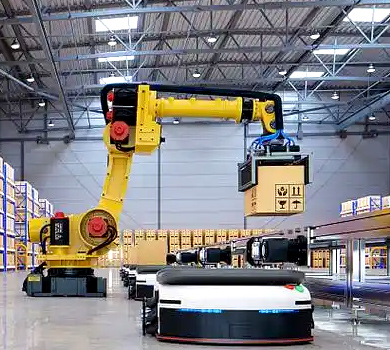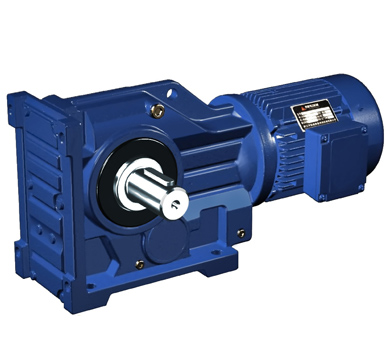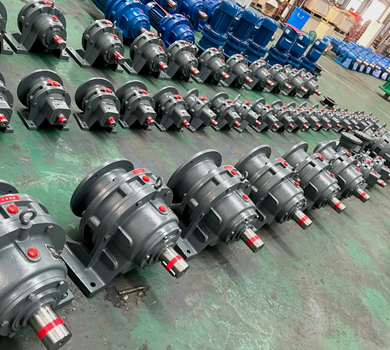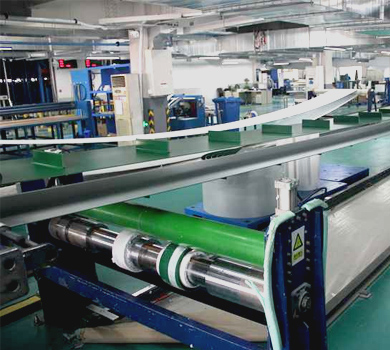Driven by consumption upgrades and intelligent manufacturing, packaging machinery is evolving toward ultra-high speed (≥1200 units/min), ultra-precision (±0.05mm positioning accuracy), and ultra-flexibility (30-minute changeover). As the core equipment in liquid packaging lines, automatic labeling machines' rotary positioning performance directly determines overall line efficiency and product yield. This article analyzes a production line upgrade case for an international beverage group to demonstrate how waimica reconstructs the value system of packaging machinery transmission systems through technological innovation.
1. Industry Challenges and Pain Points Analysis
Modern automatic labeling machines exhibit three technical characteristics:
- Composite motion control requirements: Must simultaneously achieve rotary positioning (±0.1° accuracy), vertical labeling (5g acceleration), and dynamic tension control
- Energy efficiency structure conflicts: Traditional reducers sacrifice 20% heat dissipation performance for IP65 protection, leading to temperature rise >75℃ during continuous operation
- Uncontrolled maintenance costs: Under high-frequency forward-reverse operations, gearboxes require lubricating oil replacement every 1,800 hours on average, with lifecycle maintenance costs accounting for 22% of equipment TCO
Typical equipment consists of a servo motor, reducer, indexer, sensor array, and HMI forming a motion control closed-loop. The industry currently faces four technical bottlenecks:
- Dynamic response lag in transmission systems causing 0.3% labeling misalignment rate
- Reducer volume/weight restricting modular equipment design (traditional solutions have volume density <120N·m/kg)
- Sealing systems averaging only 1,200-hour failure cycles under high-pressure washdown conditions
- Non-standard selection increasing spare parts inventory costs by 35%
2. Evolution of Reducer Technical Requirements
As the "nerve center" of motion control systems, modern automatic labeling machines impose eight core requirements on reducers:
| Performance Dimension | Technical Indicators |
|---|---|
| Torque density | ≥150N·m/kg (achieving >35% drive unit weight reduction) |
| Transmission accuracy | Rotational backlash ≤0.5 arcmin, repeat positioning accuracy ±0.01° |
| Dynamic characteristics | Torque establishment time <20ms, adaptable to ±40% load mutations |
| Environmental adaptability | -10℃~60℃ wide temperature operation, IEC 60068-2-6 vibration resistance |
| Service life | L10 life ≥60,000 hours (per ISO 6336 calculation) |
| Maintenance-free design | Grease replacement cycle ≥3 years, seal life ≥20,000 hours |
| Compatibility | Supports IEC, NEMA, and JIS standard flange interfaces |
| Cleanliness | Configurable food-grade lubrication meeting GMP requirements |
3. waimica Precision Planetary Reducer Solution
Structural Design Innovations
- Three-stage planetary topology: Asymmetric tooth profile modification reduces torque fluctuation coefficient from 6% to 1.8%
- Modular flange interface: Compatible with 14 mainstream motor flange types, with ±0.3mm mounting hole error compensation
- Dual-channel cooling system: 360° annular fins + built-in heat pipes on φ160mm body, measured continuous operation temperature rise ≤50℃
Performance Parameter Comparison
| Parameter | waimica PGR-120 | Nabtesco RH Series | Harmonic Drive CSD Series |
|---|---|---|---|
| Rated torque (N·m) | 1200 | 1000 | 900 |
| Radial dimension (mm) | 160 | 185 | 175 |
| Transmission efficiency (%) | 95 | 93 | 90 |
| Protection grade | IP67 | IP65 | IP66 |
| Backlash (arcmin) | ≤0.3 | ≤0.8 | ≤1.5 |
Special Condition Adaptations
- Food-grade lubrication: NSF H1 certified, meeting cleanroom ISO Class 4 requirements
- Extreme condition options: -30℃ cold start package and 100℃ high-temperature seal assembly
- Vibration suppression: Built-in inertia matching rings elevating system resonance frequency above 220Hz
4. Typical Application Case
Project Background
A global beverage giant's Southeast Asian factory faced these issues with a Japanese brand reducer in their PET bottle labeling line:
- 0.28% labeling misalignment rate during high-speed operation
- 45-minute daily downtime for gearbox lubrication
- 3.2% quarterly failure rate
waimica Solution Implementation
- 3D simulation verification: Gear mesh stiffness analysis via SolidWorks Simulation optimized tooth profile modification
- Dynamic characteristic matching: Constructed mechatronic coupling model in MATLAB/Simulink, elevating system damping ratio from 0.1 to 0.28
- Field commissioning support: Deployed Sino-German joint team completing full process from installation to parameter tuning within 48 hours
Implementation Results
| Metric | Before | After | Improvement |
|---|---|---|---|
| Labeling yield | 99.4% | 99.85% | +45.3% |
| MTBF (hours) | 2200 | 4800 | +118.2% |
| Energy efficiency (kW·h/thousand units) | 0.38 | 0.29 | -23.7% |
5. Conclusion and Brand Value Summary
waimica has established unique competitive advantages through three technological pillars: materials science breakthroughs (high-carbon chromium bearing steel quenching), manufacturing precision leap (gear grinding accuracy reaching ISO 1328-1:2013 Grade 3), and intelligent operation integration (built-in vibration sensors for predictive maintenance). We not only achieve 90% performance parity with international brands but also redefine premium reducer value equations through 25% cost advantage, 4-week standard delivery cycles, and 24/7 localized service.
Facing the evolution trend of packaging machinery toward ultra-high speed (>1500 units/min), ultra-clean (ISO Class 3), and ultra-intelligent directions, waimica will continue investing in ceramic bearings, magnetic levitation transmission, and digital twin debugging to become the "hidden champion" in global intelligent manufacturing transmission. Our technology roadmap shows by 2026, we will achieve:
- Torque density breakthrough of 180N·m/kg
- Transmission efficiency提升至96%
- Predictive maintenance accuracy ≥85%









